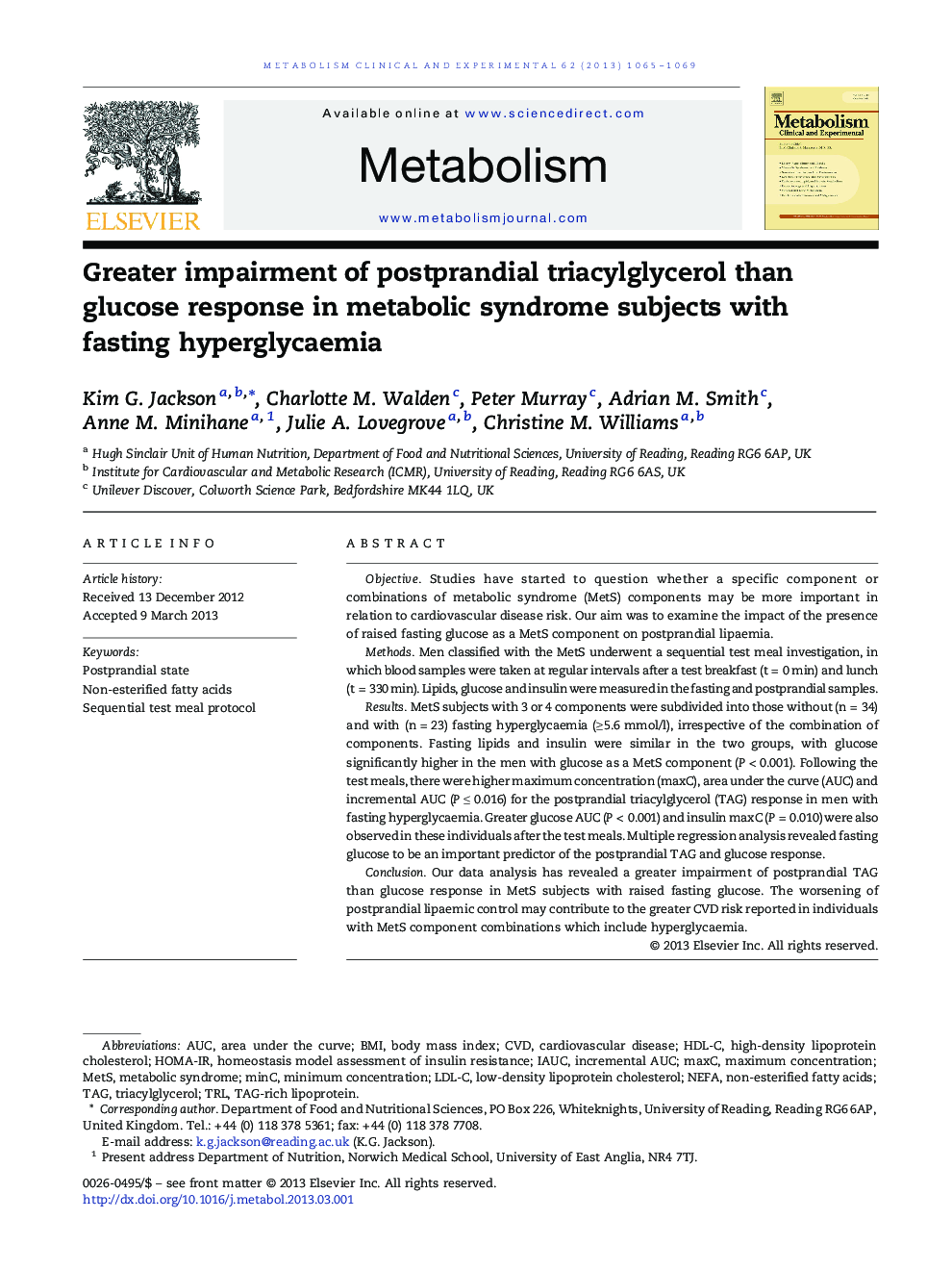| Article ID | Journal | Published Year | Pages | File Type |
|---|---|---|---|---|
| 5903173 | Metabolism | 2013 | 5 Pages |
ObjectiveStudies have started to question whether a specific component or combinations of metabolic syndrome (MetS) components may be more important in relation to cardiovascular disease risk. Our aim was to examine the impact of the presence of raised fasting glucose as a MetS component on postprandial lipaemia.MethodsMen classified with the MetS underwent a sequential test meal investigation, in which blood samples were taken at regular intervals after a test breakfast (t = 0 min) and lunch (t = 330 min). Lipids, glucose and insulin were measured in the fasting and postprandial samples.ResultsMetS subjects with 3 or 4 components were subdivided into those without (n = 34) and with (n = 23) fasting hyperglycaemia (â¥Â 5.6 mmol/l), irrespective of the combination of components. Fasting lipids and insulin were similar in the two groups, with glucose significantly higher in the men with glucose as a MetS component (P < 0.001). Following the test meals, there were higher maximum concentration (maxC), area under the curve (AUC) and incremental AUC (P â¤Â 0.016) for the postprandial triacylglycerol (TAG) response in men with fasting hyperglycaemia. Greater glucose AUC (P < 0.001) and insulin maxC (P = 0.010) were also observed in these individuals after the test meals. Multiple regression analysis revealed fasting glucose to be an important predictor of the postprandial TAG and glucose response.ConclusionOur data analysis has revealed a greater impairment of postprandial TAG than glucose response in MetS subjects with raised fasting glucose. The worsening of postprandial lipaemic control may contribute to the greater CVD risk reported in individuals with MetS component combinations which include hyperglycaemia.
